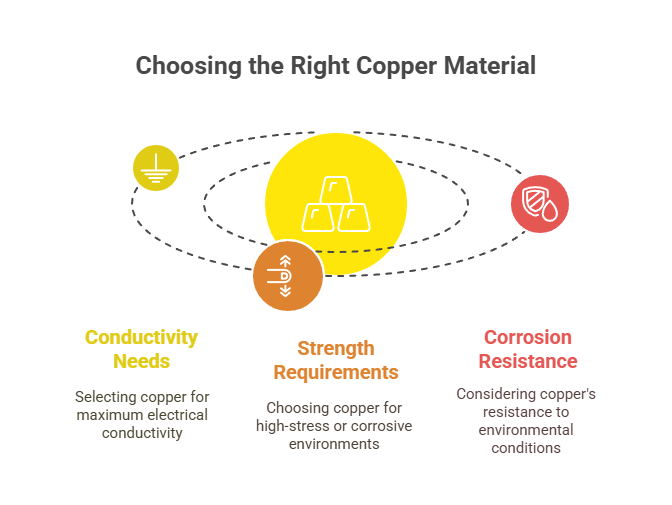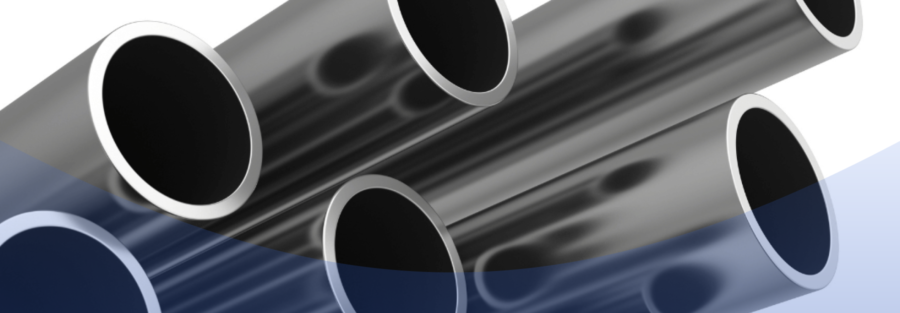When it comes to choosing the right copper material for your project, understanding the differences between Copper C10100 and Copper 100 is crucial. Both of these materials offer excellent conductivity, but they have unique properties that make them suitable for different applications. In this ultimate guide, we’ll explore the differences between Copper C10100 and Copper 100, their properties, and the industries in which they are most commonly used.
What is Copper C10100?
Copper C10100, also known as oxygen-free copper, is a high-purity copper with a minimum copper content of 99.99%. It’s known for its excellent electrical and thermal conductivity, making it ideal for high-performance applications where superior conductivity is required.
Some key features of Copper C10100 include:
- High Purity: With oxygen levels as low as 0.0005%, Copper C10100 offers minimal impurities, which allows for optimal performance in electrical and electronic applications.
- Excellent Corrosion Resistance: The low oxygen content gives Copper C10100 enhanced resistance to corrosion, especially in environments with high humidity or moisture.
- Weldability: This material is highly weldable and is often used in applications requiring a clean, high-quality weld.
What is Copper 100?
Copper 100 refers to a copper alloy that may contain small amounts of other elements such as silver, tin, or phosphorous. It is typically used for applications requiring specific strength or improved resistance to certain environmental factors.
- Alloy Composition: Copper 100 contains higher amounts of other elements than Copper C10100, which influences its mechanical properties, such as strength and durability.
- Applications: Copper 100 is often used in industrial settings where higher strength and corrosion resistance are required, such as in marine environments or automotive components.
- Strength: Unlike Copper C10100, Copper 100 is stronger due to the presence of alloying elements, but it may not offer the same level of conductivity.
Key Differences Between Copper C10100 and Copper 100
Here’s a quick comparison of the key differences between Copper C10100 and Copper 100:
| Property | Copper C10100 | Copper 100 |
|---|---|---|
| Purity | 99.99% Pure | Alloyed with other metals |
| Electrical Conductivity | Excellent | Good, but lower than C10100 |
| Corrosion Resistance | Very High | High, but depends on alloy |
| Strength | Medium | Higher due to alloying |
| Applications | Electrical and electronics | Industrial and mechanical |
Applications of Copper C10100
Because of its high purity, Copper C10100 is commonly used in applications where electrical conductivity is of utmost importance. Some of the industries that rely on Copper C10100 include:
- Electrical Wiring: Used in cables and wires for superior conductivity.
- Heat Exchangers: Utilized in heat exchangers and other cooling systems due to its thermal conductivity.
- Electronics: For manufacturing components such as connectors and contacts that require minimal resistance.
Applications of Copper 100
On the other hand, Copper 100 is used in industries where mechanical strength and resistance to environmental factors are more important than conductivity. Common applications include:
- Marine: In the manufacture of components exposed to seawater, such as boat propellers.
- Automotive: For manufacturing certain parts in vehicles that require higher strength.
- Aerospace: For parts that need both strength and resistance to high temperatures.
Copper Daily Requirement
The daily copper requirement for an average adult is essential to support the body’s metabolic processes. Copper plays a crucial role in the formation of hemoglobin, collagen, and neurotransmitters. An optimal daily intake is approximately 900 micrograms for adults, with higher requirements for pregnant or breastfeeding women. While copper from food sources is ideal, supplements may be used under medical guidance for those with a deficiency.
Copper Tips for Industrial Use
Here are some copper tips to help you choose the right copper material for your project:
- Understand Conductivity Needs: If your project requires maximum electrical conductivity, Copper C10100 is the preferred choice.
- Consider Strength Requirements: If you need more strength, especially in high-stress or corrosive environments, Copper 100 may be a better option.
- Corrosion Resistance: Consider the environmental conditions—Copper C10100 is ideal for moisture-prone applications, while Copper 100 offers better corrosion resistance in extreme conditions.

Conclusion
In conclusion, both Copper C10100 and Copper 100 offer unique properties that make them suitable for different industrial applications. Copper C10100 excels in electrical conductivity, while Copper 100 is stronger and more resistant to environmental wear. By understanding their differences, you can make an informed decision on which copper material best suits your needs, whether it’s for electronics, marine, or automotive applications.
FAQs
Copper C10100 is primarily used in applications requiring high electrical conductivity, such as wiring, heat exchangers, and electronic components.
Copper C10100 is a high-purity copper with excellent conductivity, while Copper 100 is an alloy with added elements for higher strength and corrosion resistance.
While Copper C10100 offers excellent corrosion resistance, Copper 100 may be more suitable for marine environments due to its enhanced durability and strength.
Copper 100 is stronger than Copper C10100 due to the alloying elements, making it more suitable for applications requiring higher strength.
The daily copper requirement for an adult is approximately 900 micrograms, essential for various bodily functions, including the formation of red blood cells and connective tissue.

